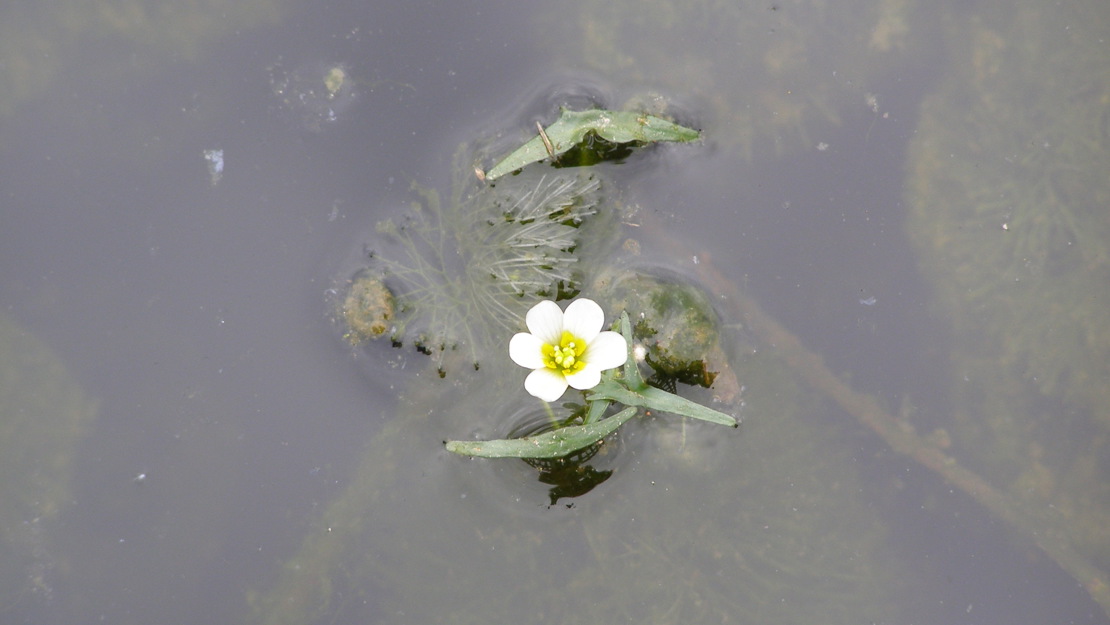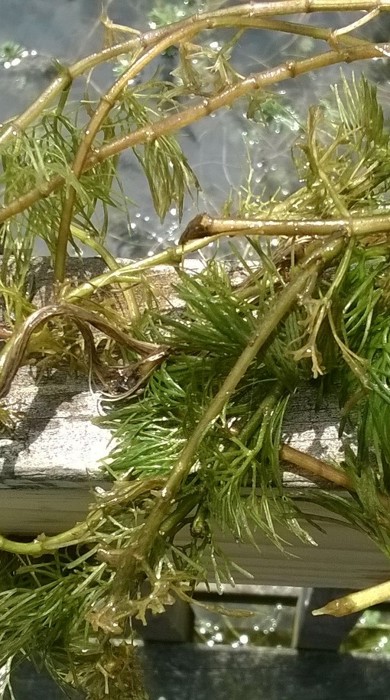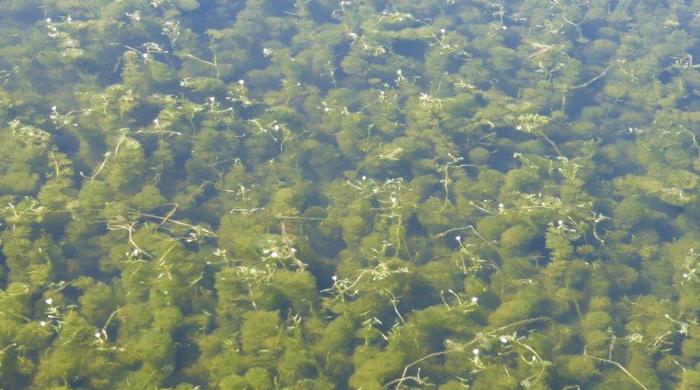Cabomba caroliniana
Cabomba
Also known as:
Carolina fanwort
Family: Cabombaceae
Origin: North and South America

General description
Perennial submerged rooted aquatic herb. Submerged leaves are < 70 mm long, opposite, finely divided and fan-shaped. Floating leaves are < 20 mm long, alternate, entire and elongated. Flowers are small, white with yellow centres and borne above the water's surface in summer.
What you need to know
To help protect our environment:
- You must not breed, distribute, release or sell cabomba. As cabomba is an Unwanted Organism, these restrictions apply within the Auckland region and across the whole of New Zealand.
If you see cabomba anywhere, you must report it to the Ministry of Primary Industries on 0800 80 99 66.
Habitats
Standing or slow-moving water bodies, lakes, ponds, reservoirs, ditches, streams.
Dispersal
Seed set is rare. Vegetative spread from stem fragments and rhizomes, dispersed by water. Human-mediated dispersal through dumping of aquarium waste and movement of contaminated boats and equipment.
Impact on environment
Can form dense stands, displacing native aquatic herb species, altering habitat availability for fish and invertebrates and affecting water quality. Can impede recreational water access to water bodies.
Control
Recommended approaches
Do not attempt to undertake control of this species. The Ministry of Primary Industries will carry out the control of this species.
Caution: When using any herbicide or pesticide please read the label thoroughly to ensure that all instructions and safety requirements are followed.





